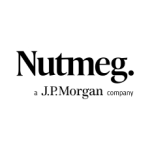How to de-risk your investments
How to de-risk your investments
16 October 2012 / by Oliver Roylance-Smith
With the balance of risk v reward being a primary factor when making investment decisions, there are also several ways of mitigating investment risk. We take a look at one particular method used within investment plans, known as collateralisation, in order to understand how it works and when it might be considered.
Mitigating risk
The concept of risk v reward should be commonplace with investors since the potential upside of what the investment could yield must be balanced with the potential downside of the investment and the risk to your capital. However, this is a broad concept and many different elements make up risk, both in terms of market risk as well as the individual risks that different investors might see when looking at the same investment.
The range of investment plans available from Investec has been augmented in recent years to include collateralised versions of some of their plans. As one of the main providers of investment plans in the UK, it is useful to understand the impact collateralisation has on your potential returns so that we can see exactly what is being included within the investment and how this affects that important risk v reward.
Understanding credit risk
One of the features of investment plans is that your capital is used to buy securities designed to achieve the stated returns of the investment. As such, the financial security of the issuer of those securities (often referred to as the counterparty) becomes an important consideration since if they are unable to fulfil their payment obligations, you may lose some or all of your investment.
Credit risk is a general term given to the possibility of a financial institution becoming unable to meet its financial obligations, for example, by becoming insolvent. When assessing any institution, though, it is important to remember that there are many elements which contribute to an overall credit risk and that these are never static.
Using credit ratings
To help, ratings agencies provide an insight into the credit rating of financial institutions, thereby allowing a comparison of the credit risk associated with different companies and investments. They do this by issuing credit ratings which are reviewed regularly and can go up or down at any point in response to changes in the financial position of the institution in question.
However, credit ratings are only one way to assess the likelihood that an institution will be able to pay back any monies owed. Although institutions with better credit ratings should be less likely to go bankrupt than institutions with worse credit ratings, this has not necessarily been the case over the last few years.
Investec Bank plc
Fitch is one of three leading credit rating agencies and as at the time of writing, Investec Bank plc has a credit rating of BBB- with a negative outlook.
The ‘BBB’ rating denotes an adequate capacity for payment of financial commitments, although adverse business or economic conditions are more likely to impair this capacity, with the ‘-‘ signifying it is at the lower end of this rating grade. The negative outlook indicates that the rating may be lowered in the short to medium term, i.e. in the next 6 months to 2 years.
What is collateralisation?
Available across some of their best selling investments, collateralised plans have been designed for those who wish to mitigate the potential impact Investec’s credit rating may have on the investment returns on offer. This is achieved by reducing the potential loss of your capital in the event that Investec fails or becomes insolvent, and to replace this risk with a risk spread across selected named institutions.
At the time of writing, these institutions are HSBC Bank plc, Nationwide Building Society, Santander UK plc, The Royal Bank of Scotland plc and Lloyds TSB Bank plc, which collectively have been titled the UK 5. The credit rating across all of the three main ratings agencies is as follows*:
|
UK 5
|
Fitch rating
|
Moody’s rating
|
Standard & Poor’s rating
|
|
HSBC Bank plc
|
AA
|
Aa3
|
AA-
|
|
Nationwide Building Society
|
A+
|
A2
|
A+
|
|
Santander UK plc
|
A
|
A2
|
A
|
|
The Royal Bank of Scotland plc
|
A
|
A3
|
A
|
|
Lloyds TSB Bank plc
|
A
|
A2
|
A
|
* All of the above long term credit ratings are as at 19th September 2012, Source: Bloomberg. Please be aware that these credit ratings can change at any time.
How does it work?
On the start date of the investment, Investec purchases debt securities issued by the named institutions (and/or UK government debt). These debt securities are known as the ‘collateral’ and will have a value equal to the value of your investment.
The collateral will be deposited in an account with Deutsche Bank who act as an independent custodian. The collateral will be held for the benefit of the investors in the relevant plan in case of Investec failing or becoming insolvent. In either event the collateral will be used to protect your investment value at that time.
Therefore, throughout the plan term Investec monitors the value of the collateral on a daily basis to ensure that its value is equal to the value of the plan and will be required to post additional collateral in the event of any shortfalls.
Impact on returns
The Collateral option or ‘UK 5 Option’ is currently available on three of Investec’s investment plans. The additional cost involved in providing the collateral and thereby mitigating counterparty risk obviously has an impact on the overall returns on offer. The differences in the potential returns are as follows:
|
Investment plan
|
Investec terms
|
UK 5 Option terms
|
Difference
|
|
Bonus Income Plan
|
6.84% + 0.5% bonus
|
5.64% + 0.5% bonus
|
1.2% fixed income
|
|
Enhanced Kick Out Plan
|
13% per year
|
10.5% per year
|
2.5% per year
|
|
Geared Returns Plan
|
80% if FTSE higher
|
60% if FTSE higher
|
20% fixed return
|
Investor choice
Ultimately, however remote the likelihood of bankruptcy might be, the risk will always exist and offering the investor the choice to mitigate this risk should they wish to do so is a welcome one. In this respect, mitigating risk can take many formats, one of which is to utilise collateral such as that offered by the UK 5 Option from Investec.
Combined with the returns on offer from investment plans being stated up front, the result is a wide range of investments which provide a defined return for a defined level of risk, ensuring the investor is fully informed about the balance of risk v reward prior to making that important decision.
Compare Investec investment plans » Alternatively, discover our wide range of investment plans and opportunities we have available.
No news, feature article or comment should be seen as a personal recommendation to invest. Prior to making any decision to invest, you should ensure that you are familiar with the risks associated with a particular investment. If you are at all unsure of the suitability of a particular investment, both in respect of its objectives and its risk profile, you should seek professional advice.
Some structured investment plans are not capital protected and there may be the risk of losing some or all of your initial investment. There is also a risk that the company backing the plan or any company associated with the plan may be unable to repay your initial investment and any returns stated, in which case you may not be entitled to compensation from the Financial Services Compensation Scheme (FSCS). In addition, you may not get back the full amount invested if the plan is not held for the full term. The past performance of the FTSE 100 Index is not a guide to its future performance.
© Fair Investment Company Limited
Tags





